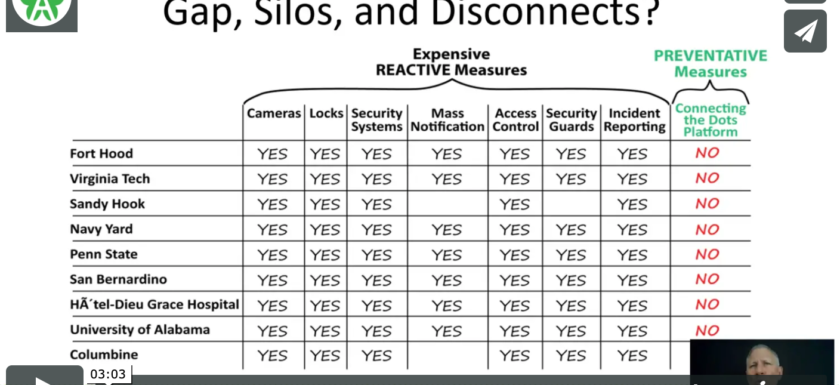
The big question on everyone’s mind after an incident or a tragedy is, will more security help?
Let’s take a look at the facts. In 2018 the global physical security market was $84.1 BILLION and projected to grow, and yet there were still over 300 mass shootings in the United States.
Security solutions have limitations when it comes to preventing future attacks and tragedies. A major limitation of security is in organizations and situations where you have an open environment which is the case for the majority of schools, organizations (during business hours), and communities in the United States.
The Department of Homeland Security recognized these limitations in a recent report:
“DHS recognizes that physical protection measures only go so far when it comes to preventing an active shooter incident. Social issues such as mental health, bullying, and criminal profiling play a critical role in the prevention of gun violence in schools. Potential warning signs are not always the result of a direct threat—more often, there is observable conduct which sends up a red flag, so to speak. The importance of detecting and addressing concerning behavior, thoughts, or statements cannot be overstated. In fact, preventing violence by detecting and addressing these red flags is more effective than any physical security measure.”
So what’s the answer? Organizations and communities need to be able to collect, assess, and connect the red flags before an incident occurs, and they need the right tools to do that.
Let Awareity help you determine if your tools are really helping to prevent the next incident, or if they are just there to help you create a timeline after it happens.
Looking for more information?
Click here or use the form to your right to reach out and we’ll be in touch with more information! Real people connecting the dots, who could ask for more?